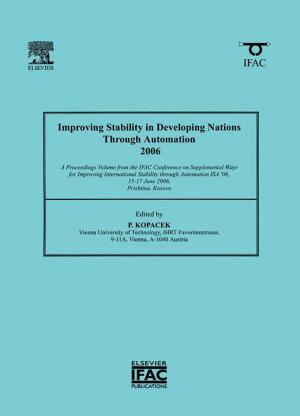Low Salinity and Engineered Water Injection for Sandstone and Carbonate Reservoirs
Nonfiction, Science & Nature, Technology, Petroleum, Power Resources| Author: | Emad Walid Al Shalabi, Kamy Sepehrnoori | ISBN: | 9780128136058 |
| Publisher: | Elsevier Science | Publication: | June 14, 2017 |
| Imprint: | Gulf Professional Publishing | Language: | English |
| Author: | Emad Walid Al Shalabi, Kamy Sepehrnoori |
| ISBN: | 9780128136058 |
| Publisher: | Elsevier Science |
| Publication: | June 14, 2017 |
| Imprint: | Gulf Professional Publishing |
| Language: | English |
Low Salinity and Engineered Water Injection for Sandstone and Carbonate Reservoirs provides a first of its kind review of the low salinity and engineered water injection (LSWI/EWI) techniques for today’s more complex enhanced oil recovery methods. Reservoir engineers today are challenged in the design and physical mechanisms behind low salinity injection projects, and to date, the research is currently only located in numerous journal locations. This reference helps readers overcome these challenging issues with explanations on models, experiments, mechanism analysis, and field applications involved in low salinity and engineered water.
Covering significant laboratory, numerical, and field studies, lessons learned are also highlighted along with key areas for future research in this fast-growing area of the oil and gas industry. After an introduction to its techniques, the initial chapters review the main experimental findings and explore the mechanisms behind the impact of LSWI/EWI on oil recovery. The book then moves on to the critical area of modeling and simulation, discusses the geochemistry of LSWI/EWI processes, and applications of LSWI/EWI techniques in the field, including the authors’ own recommendations based on their extensive experience.
It is an essential reference for professional reservoir and field engineers, researchers and students working on LSWI/EWI and seeking to apply these methods for increased oil recovery.
- Teaches users how to understand the various mechanisms contributing to incremental oil recovery using low salinity and engineering water injection (LSWI/EWI) in sandstones and carbonates
- Balances guidance between designing laboratory experiments, to applying the LSWI/EWI techniques at both pilot-scale and full-field-scale for real-world operations
- Presents state-of-the-art approaches to simulation and modeling of LSWI/EWI
Low Salinity and Engineered Water Injection for Sandstone and Carbonate Reservoirs provides a first of its kind review of the low salinity and engineered water injection (LSWI/EWI) techniques for today’s more complex enhanced oil recovery methods. Reservoir engineers today are challenged in the design and physical mechanisms behind low salinity injection projects, and to date, the research is currently only located in numerous journal locations. This reference helps readers overcome these challenging issues with explanations on models, experiments, mechanism analysis, and field applications involved in low salinity and engineered water.
Covering significant laboratory, numerical, and field studies, lessons learned are also highlighted along with key areas for future research in this fast-growing area of the oil and gas industry. After an introduction to its techniques, the initial chapters review the main experimental findings and explore the mechanisms behind the impact of LSWI/EWI on oil recovery. The book then moves on to the critical area of modeling and simulation, discusses the geochemistry of LSWI/EWI processes, and applications of LSWI/EWI techniques in the field, including the authors’ own recommendations based on their extensive experience.
It is an essential reference for professional reservoir and field engineers, researchers and students working on LSWI/EWI and seeking to apply these methods for increased oil recovery.
- Teaches users how to understand the various mechanisms contributing to incremental oil recovery using low salinity and engineering water injection (LSWI/EWI) in sandstones and carbonates
- Balances guidance between designing laboratory experiments, to applying the LSWI/EWI techniques at both pilot-scale and full-field-scale for real-world operations
- Presents state-of-the-art approaches to simulation and modeling of LSWI/EWI















